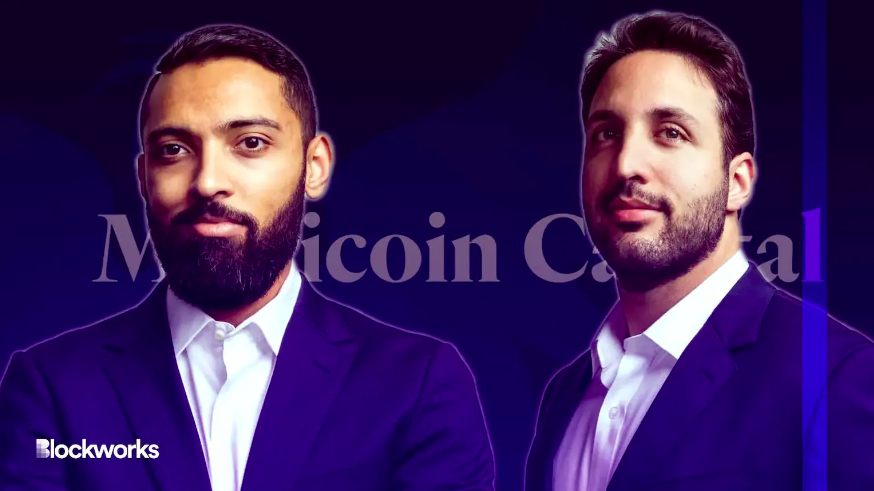This article comes from: Blockworks
Compilation: Odaily Azuma

This article comes from: Blockworks
Compilation: Odaily Azuma
Multicoin Capital is one of the most well-known investment institutions in the industry. During the rapid rise of FTX, the institution had worked closely with FTX and its founder SBF. However, with the collapse of the building, the institution also suffered huge losses .

In just two weeks in the late autumn of 2022, with the collapse of SOL, which was deeply involved by SBF, and the collapse of FTX's own platform currency, FTT, Multicoin Capital lost 55% of its book funds. According to the investor letter published in March this year, Multicoin Capital The rate of loss of hedge funds throughout 2022 is as high as 91.4%.
secondary title
At the very beginning of the story, how did Multicoin Capital become attached to FTX?
Recently, Multicoin Capital co-founders Kyle Samani and Tushar Jain participated in a podcast with overseas media Blockworks. The host Jason Yanowitz asked such a question: "How did Multicoin Capital get entangled with FTX?"
Samani explained that although Multicoin Capital did not invest in FTX in the early days (2019), they were interested in the rapid growth of the exchange. At that time, Solana had just launched the mainnet, and DeFi Summer was gradually gaining momentum. SBF talked about it on Twitter every day, which attracted the attention of Multicoin Capital.
After the two parties had a telephone discussion, SBF started building Serum, a DeFi center running on the Solana network, and Multicoin Capital decided to invest in the project together with FTX.
"We had a good relationship with SBF at the time, but things went wrong very quickly, for one simple reason," Samani said.
Samani continued to say that Multicoin Capital had some concerns about the suspicious relationship between Alameda and FTX. While the initial cooperation between the two parties was successful, Multicoin Capital conducted some investigations on its own to seek opinions from other market makers, but the feedback it received was "very positive".So Multicoin Capital can only choose: "Okay... then let's take a look."Our initial concern was that Alameda's relationship with FTX might give it an additional edge in its market making business, which would scare off other market makers on FTX.
We spoke to some market makers, but they said they didn't notice the advantage. "
secondary title
What did Multicoin Capital think before the FTX crash?
In the fall of 2022, when Samani and Jain attend the Solana Breakpoint conference in Lisbon, Portugal, a crisis begins to loom.
After hearing rumors of possible problems with FTX, Multicoin Capital's first reaction was that the situation should be under control.
"Given the amount of equity capital that FTX has raised, this should be enough of a buffer... FTX is very profitable, with over $1 billion in revenue in 2021, so they have quite a lot of money... there might be some flow," Jain said. The issue of maturity mismatch, or the capital is tied up in leveraged positions, and they need some time to unwind those positions ... We don't think that will lead to bankruptcy."
When the host continued to ask how close the relationship between Multicoin Capital and FTX was on the grounds that the two parties had jointly participated in multiple investments, Jain retorted: "I don't think so (the relationship between the two parties is too close), there is too much Add more oil and vinegar ingredients."Samani stated: “”
Are we on good terms? Yes, but this is a financial market and we are also competing.
secondary title
What lessons has Multicoin Capital learned from FTX?
In the podcast, Jain also reflects on his early impressions of SBF: "This guy was able to talk to the most well-known investment funds, the most sophisticated investors in the world, and convince them to invest in him."
Jain believes that the culprit of the FTX incident is that "there is no governance means to limit SBF, and there is no transparency in internal operations", which has the consequence that they can do whatever they want.
Jain gave an example: "For example, the CEO can find the CTO and ask him to write a backdoor program so that the CEO will not alert the auditors when transferring assets...From the perspective of supervision, there is almost no way to prevent this from happening. "In order to improve the level of supervision in the future, Jain suggested operating an exchange like a DeFi protocol, and all content needs to be auditable in real time.”